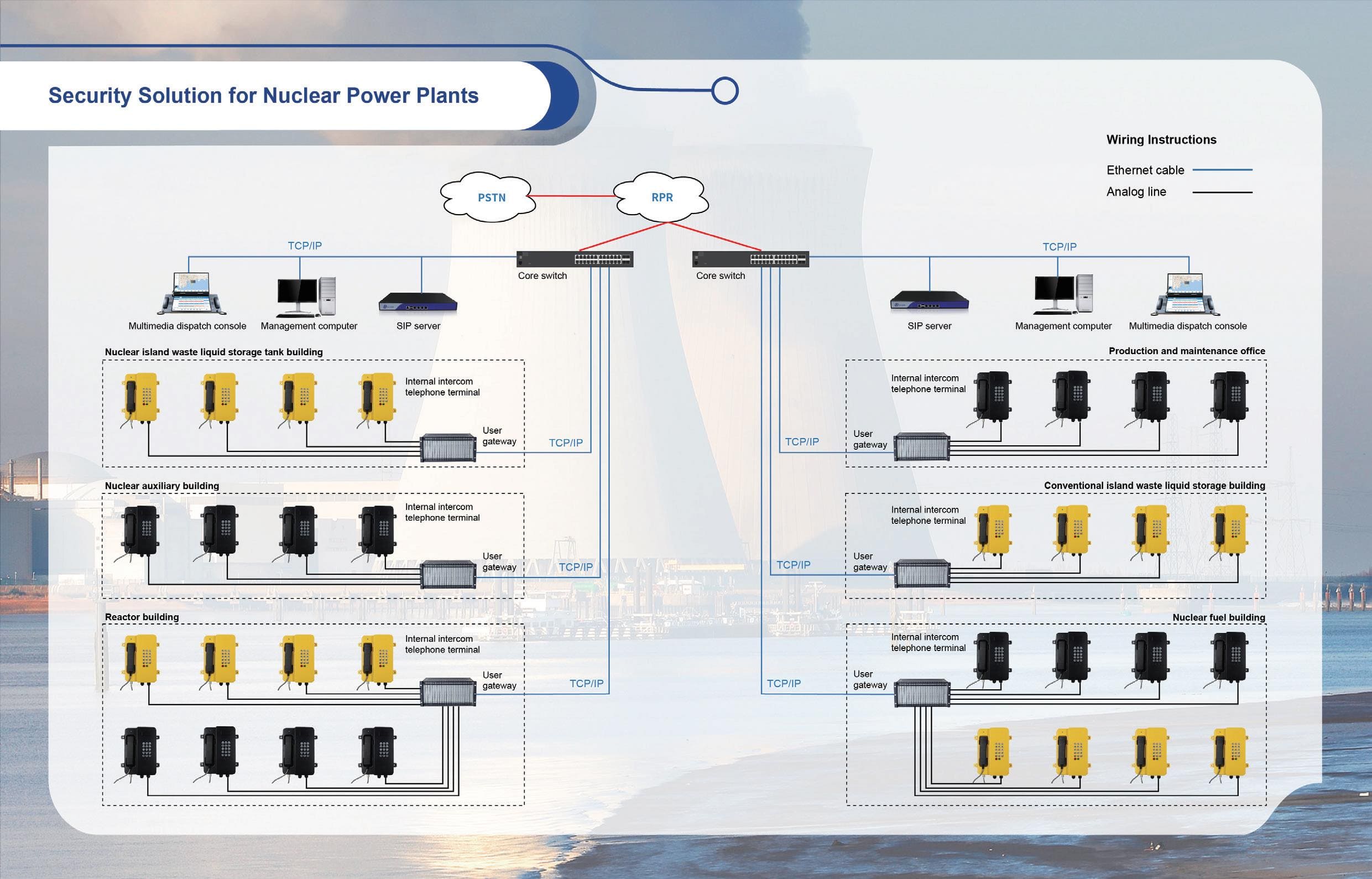
Enhancing Nuclear Power Plants Secure Communication System for Safety and Efficiency
Understanding Nuclear Power Plants Secure Communication System
Definition and Importance
The Nuclear Power Plants Secure Communication System is a critical framework designed to ensure efficient and secure communication within nuclear facilities. This system plays a vital role in maintaining safety, security, and operational integrity in environments that require the highest levels of reliability and confidentiality. In the nuclear sector, secure communication encompasses various technologies and practices that mitigate risks associated with data breaches, misinformation, and operational disruptions.
Components of a Secure Communication System
A robust Nuclear Power Plants Secure Communication System comprises several key components:
- Hardware: Specialized devices designed for secure environments, including secure telephones and encrypted radios.
- Software: Communication platforms and applications equipped with encryption capabilities to safeguard data transmission.
- Protocols: Established communication protocols that define how data is transmitted and secured, ensuring consistency and reliability.
- Training and Procedures: Operational guidelines and training programs that protect against human error and enhance personnel readiness.
Key Benefits for Nuclear Facilities
Implementing a secure communication system in nuclear facilities offers numerous benefits:
- Enhanced Safety: Efficient communication mitigates the risks associated with emergencies, enabling rapid and effective responses.
- Increased Efficiency: Streamlined communication processes lead to faster decision-making and problem resolution, enhancing operational productivity.
- Protection Against Cyber Threats: Advanced encryption and secure channels protect sensitive information from cyber threats, reducing the risk of data breaches.
- Regulatory Compliance: Adhering to stringent regulations concerning information security and operational transparency is crucial for operational licenses.
Challenges in Implementing Communication Systems
Common Security Threats
Nuclear power plants face various potential security threats that can compromise communication systems, such as:
- Cyber Attacks: Targeted attacks on communication networks aimed at disrupting operations or stealing sensitive data.
- Insider Threats: Employees with access to secure systems may inadvertently or maliciously compromise data integrity.
- Natural Disasters: Events like earthquakes or floods can disrupt communication infrastructure, highlighting the need for robust backup systems.
Integration with Existing Technologies
Integrating new secure communication systems with existing technologies can be challenging due to differing compatibility levels, operational disruptions, and training needs. A phased approach to integration, along with thorough testing, can help mitigate these issues. Importance should be placed on ensuring that new systems seamlessly work with legacy technologies, enabling efficient and secure information flow across various platforms.
Regulatory Compliance Considerations
Nuclear facilities are subject to stringent regulations from various governing bodies concerning safety and security. Maintaining compliance with these regulations requires ongoing assessments of communication systems, regular audits, and updates to communication protocols. Facilities must stay informed about changing regulatory landscapes to ensure their systems meet the required standards.
Best Practices for Nuclear Power Plants Secure Communication System
Ensuring Redundancy and Reliability
Redundancy is vital for secure communication systems in nuclear power plants. Implementing multiple communication pathways ensures that, in the event of a failure, critical communications continue uninterrupted. Backup systems should be tested regularly to confirm their functionality and reliability in emergency scenarios.
Regular Training for Personnel
Human error is one of the leading causes of communication failures. Regular training programs for personnel enhance awareness of communication protocols and technologies while fostering a culture of safety and security. Training sessions should not only cover system usage but also emergency procedures and response strategies to prepare staff for potential crisis situations.
Continuous Monitoring and Assessment
Ongoing monitoring of communication systems is essential to detect anomalies or vulnerabilities. Regular assessments, including penetration testing and vulnerability scans, help identify potential weaknesses that could be exploited. Facilities should establish a feedback loop where insights gained from monitoring inform continuous improvement of communication processes and technologies.
Technological Innovations in Secure Communication
Emerging Tools and Technologies
Advancements in technology continually enhance the capabilities of secure communication systems. Some emerging tools include:
- Blockchain Technology: Provides a decentralized and tamper-proof method for logging communications and transactions, enhancing security.
- Artificial Intelligence: AI can enhance threat detection protocols by analyzing patterns in communication data, identifying potential security issues faster.
- Quantum Encryption: Holding promise for unprecedented levels of security, quantum encryption uses principles of quantum mechanics to secure communications.
Case Studies of Successful Integrations
Several nuclear facilities around the globe have successfully implemented innovative secure communication systems:
- Case Study 1: A nuclear facility in Europe integrated a blockchain-based communication system that significantly reduced the risk of data tampering.
- Case Study 2: Another facility adopted AI-driven monitoring tools, which led to a 40% decrease in response times during security incidents.
Future Trends in Communication Security
The future of secure communication in nuclear power plants is poised for significant evolution. Trends include increased reliance on cloud-based communication systems, the incorporation of big data analytics for enhanced decision-making, and a growing focus on user-friendly interfaces to ensure personnel can manage complex systems effectively. Additionally, strengthening international cooperation on communication security in nuclear contexts will be crucial for a globally coordinated approach to safety.
Measuring the Effectiveness of Secure Communication Systems
Key Performance Indicators
To gauge the effectiveness of secure communication systems, nuclear facilities should establish clear Key Performance Indicators (KPIs), such as:
- Incident Response Time: Measuring how quickly the system can respond to security threats.
- System Uptime: Tracking the reliability and availability of communication systems.
- User Satisfaction Scores: Gathering feedback from personnel about system usability and effectiveness.
Feedback Mechanisms for Continuous Improvement
Regularly soliciting feedback from personnel involved in communication processes provides valuable insights into system performance and areas for improvement. Establishing open channels for feedback encourages staff to report issues or suggest enhancements, fostering an environment of continuous improvement.
Long-term Impact on Safety and Operations
Ultimately, an effective secure communication system contributes positively to the long-term safety and operational efficiency of nuclear power plants. By minimizing the risks associated with communication failures, facilities can maintain higher safety standards, operational transparency, and regulatory compliance, thus ensuring trust from stakeholders and the public.
